1918 Packard 3-35 Twin-Six 7-Passenger Touring 73758 Miles Burgundy 424 cubic
- Location: Local pick-up only
- Condition: Used
- Make: Packard
- Model: 3-35 Twin-Six 7-Passenger Touring
- Type: --
- Trim: --
- Year: 1918
- Mileage: 73758
- VIN: 158814
- Color: Burgundy
- Engine size: 424 cubic inch V12
- Power options: --
- Fuel: Gasoline
- Transmission: Manual
- Drive type: --
- Interior color: Black
- Options: --
- Vehicle Title: N/A
1918 Packard 3-35 Twin-Six 7-Passenger Touring -- Description
In the early years of motoring, the cars primitive but so were the roads. Pavement was rare and high-speed interstate travel was still at least 40 years away. Nevertheless, cars evolved quickly and luxury was defined not by features and amenities, but by size and power. In those early days, the only way to make more power was to simply make bigger engines, and those bigger engines needed bigger chassis to carry them. It’s why there’s such a huge chasm... between the humble 20 horsepower Model T and massive road locomotives like this 1918 Packard 3-35 Twin Six touring. The Twin Six was developed in the quest for more sophistication, not merely more power. There were massive 6-cylinder engines from Pierce-Arrow and Peerless that could deliver the power, but with pistons as big as paint cans banging around, they were still somewhat coarse. Jesse Vincent, Packard’s chief engineer, realized that twice as many pistons would endow the Twin Six with the same performance with less weight in the reciprocating assembly, and therefore greater smoothness than its six-cylinder rivals. And he was right, because the 424 cubic inch V12 in this spectacular touring car sounds and feels far more sophisticated than any of its contemporaries and may even rival luxury cars of the ‘30s in terms of smoothness and torque. It’s an astounding achievement for the period. This Third Series Twin Six has a fantastic story to tell, with ownership history dating back more than 70 years. It has never been fully disassembled for restoration, but rather used and maintained the way the best cars tend to be, keeping it at the peak of mechanical fitness and ready to be used at a moment’s notice. It has been with the same owner since 1972, and since then has been a preferred tour vehicle. Repainted once, perhaps in the 1950s, it has a fantastic look with a soft patina that isn’t deteriorated, but simply the result of aging gracefully. It needs nothing to be enjoyed, toured, and shown with pride at any event you care to attend. Black fenders and hood complement the deep burgundy bodywork, although there’s no disguising the car’s size, which sits on an enormous 135-inch wheelbase. By 1918 the era of high-maintenance brass was over, so there are some nickel details but for the most part, the trim is painted black. Note details like the Boyce Moto-Meter which features a bi-plane on its face, perhaps linking to Packard’s experience with Liberty aircraft engines. There’s also a side-mounted trunk that’s quite handy for spares and tools, and we find the form-follows-function look of the trunk rather appealing. Twin spares out back balance the car’s mass quite well and there’s an accessory STOP light in the center of the spare tire rack, along with auxiliary marker lights that function as both stop lights and turn signals for safe touring. The interior was freshened in the 1970s with black leatherette on the seats, but it’s worth noting that the door panels, front seat back, and jump seats are 100% original. A massive wood-rimmed steering wheel makes the giant Packard remarkably easy to handle (this car was frequently driven by the owner’s wife as a parade vehicle, speaking highly of its user-friendly nature) and the controls are arrayed in a familiar way, so it will be easy to get acquainted. An array of gauges monitors the engine, with an auxiliary temperature gauge added to the left of the steering column, perhaps because the Moto-Meter is just too far away to see clearly. The Waltham clock has been removed for cleaning but will be reinstalled before delivery. You may also be wondering about the additional knobs, including the large red one in the center of the dash—these are for the Borg-Warner overdrive unit that was installed in the 1970s for high-speed touring. The system has proven its reliability in over 20,000 miles of touring. Those of you with sharp eyes might also spot the updated Bosch voltage regulator and brand-new wiring under the dash, another addition that makes this car a reliable touring partner. Rear seat space is massive, as you’d expect. The jump seats are probably best saved for children, but for two or three adults, this is first-class travel from the turn of the 20th century. An accessory rear windscreen makes travel especially pleasant, and it folds down when not in use to give the car a very sleek profile. The top has surely been replaced at some point since it’s just too nice to be 100 years old, but it looks quite correct and remains in excellent condition with no rips, tears, or other issues. The car also includes a full tonneau, both front and rear, plus a complete set of side curtains under the rear seat and irons that store beneath the flap on the left side of the rear seat area, while an umbrella is stored on the right. There is also a proper top boot for the top when it’s in the down position, although it was not present for our photos (it will be included with the car upon delivery). The magnificent 424 cubic inch V12 engine is a marvel of nickel-era engineering. The early Twin Sixes did not offer removable heads, but the Third Series has a familiar design and specification, making it robust, reliable, and easy to service. This car carries its original engine which has been rebuilt, including new pistons, and runs superbly. It has been properly detailed in Packard Green engine enamel with a massive cast aluminum crankcase and removable cylinder blocks, as was typical of the period. Dual ignition systems fire the engine if it were two inline-6s and a centrally-mounted carburetor hangs under the cast aluminum water inlet manifold that feeds the radiator up front. Generator, water pump, and starter are located down low on the passenger’s side. You’ll note some repairs to the aluminum water inlet, which is typical and could be dressed a bit to improve the appearance, plus a set of 1-inch spacers that help move the carburetor away from the exhaust manifolds. Together with the heat shields in the valley of the V, this car doesn’t suffer from the usual vapor lock issues that plague many Twin Sixes. It’s a little grumpy when you first start it (it’s more than 100 years old, after all) but the sound is sophisticated and far smoother than you might expect. There’s effortless torque at virtually any speed and performance exceeds just about anything else of the era, and downshifting is superfluous unless you’re at a dead stop. With the overdrive engaged, it will cruise comfortably at 50-55 MPH, although you should always bear in mind that the external contracting brakes are rear wheel only. The overdrive itself is so neatly integrated that it looks like it was installed by the factory, and the incredibly heavy-duty parts used throughout speak to Packard’s quality. The finned aluminum oil pan looks big enough for a semi-truck and there’s a recent stainless steel exhaust system with a hushed tone that’s just right. You’ll note an electric fuel pump, which is how the car is currently running, but the complete air-pressure fuel delivery system is intact and simply disconnected, so it can be put back into service if that’s your inclination. In back, tube shocks have been installed to help improve ride and handling, but again, the original recoil-style shocks are still in place with their canvas straps. The 25-inch wooden wheels were restored recently and look tremendous against the burgundy bodywork with their matching pinstripes. 35x5 blackwall tires are the right choice, giving this Twin Six a purposeful look. If you’re seeking restored perfection, this isn’t it, but if you understand that the best cars to own are those that have always been loved, respected, and used as intended, this Packard will not disappoint. Now that these are CCCA Full Classics, this would be a fine addition to any CARavan or Glidden Tour without worries that primitive performance will hold you back. Today, as when it was new, performance makes all the difference. Call today!
 1915 Packard Twin-Six Seven Passenger Touring. THE OLDEST V-12 IN THE WORLD!
1915 Packard Twin-Six Seven Passenger Touring. THE OLDEST V-12 IN THE WORLD!
Mileage: 8650
 1931 Packard 833 68137 Miles Blue and tan 5-Passenger Phaeton 320 cubic inch st
1931 Packard 833 68137 Miles Blue and tan 5-Passenger Phaeton 320 cubic inch st
Mileage: 68137
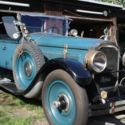 PACKARD Touring "Straight Eight 143" 7 passenger
PACKARD Touring "Straight Eight 143" 7 passenger
Mileage: 150000
 1927 Packard 336 5 Passenger Touring
1927 Packard 336 5 Passenger Touring
Mileage: 36,837
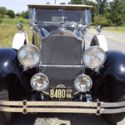 1929 Packard 7 Passenger Touring Car
1929 Packard 7 Passenger Touring Car
Mileage: 100
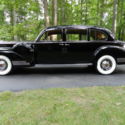 PACKARD 1941 180 LeBaron 7-PASSENGER TOURING SEDAN
PACKARD 1941 180 LeBaron 7-PASSENGER TOURING SEDAN
Mileage: 79,500
 Stunning 7-Passenger Touring Convertible in Packard Blue
Stunning 7-Passenger Touring Convertible in Packard Blue
Mileage: 1625
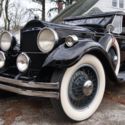 1928 PACKARD - 7 PASSENGER - TOURING SEDAN - ABSOLUTELY ONE OF A KIND - MUST SEE
1928 PACKARD - 7 PASSENGER - TOURING SEDAN - ABSOLUTELY ONE OF A KIND - MUST SEE
Mileage: 100,000
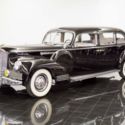 1942 Packard Super 8 One-Sixty 7-Passenger Touring Sedan
1942 Packard Super 8 One-Sixty 7-Passenger Touring Sedan
Mileage: 30,424
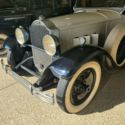 1930 Packard Model 733 open Touring Phaeton 7 Passenger
1930 Packard Model 733 open Touring Phaeton 7 Passenger
Mileage: n/a











